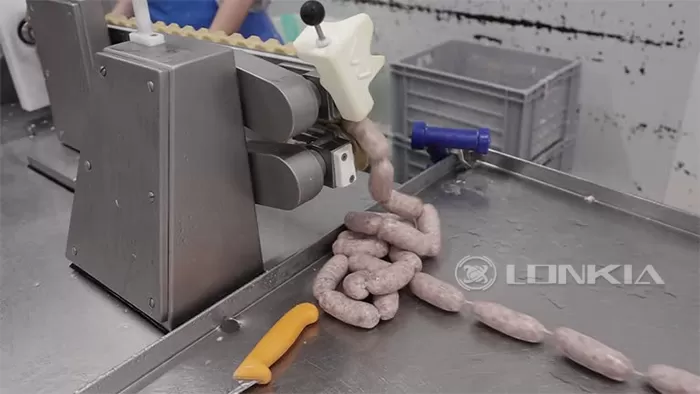As the demand for high-quality sausages grows, food producers must find ways to stay competitive and meet consumer expectations. One of the most effective ways to achieve this is by investing in an automated sausage production line. Automation enhances efficiency, improves product quality, reduces labor costs, and ensures food safety. Let’s explore the key reasons why businesses should consider this investment and how LONKIA Machinery can help optimize your sausage production process.
1. Increased Production Efficiency
One of the major advantages of an automated sausage production line is the significant boost in production efficiency. Automated systems can handle high volumes of sausages quickly, reducing production time and increasing output. This is particularly beneficial for businesses with growing demand or those aiming to scale their operations without compromising quality.
Automation minimizes downtime and speeds up processes such as grinding, mixing, stuffing, and packaging. This increased efficiency helps meet tight production schedules and keeps pace with market demand.
2. Consistent Product Quality
Quality consistency is essential in sausage production, and automated systems help ensure uniformity in every batch. The precise control over ingredient mixing, meat grinding, casing stuffing, and cooking ensures that each sausage has the same flavor, texture, and appearance.
Automation minimizes human error, which is often a cause of inconsistencies in manually-produced sausages. By using reliable automated equipment, manufacturers can achieve consistent, high-quality products every time, which is key to building customer loyalty and brand reputation.

3. Cost Savings Through Reduced Labor
Labor is one of the most significant operating costs in sausage production. Automation reduces the need for manual labor, which can lead to substantial cost savings. Automated systems handle many repetitive tasks that would otherwise require human workers, such as stuffing, linking, and packaging sausages.
By investing in automation, businesses can reduce their workforce size while maintaining or even increasing production levels. Over time, the reduction in labor costs can lead to a strong return on investment.
4. Enhanced Food Safety and Hygiene
Food safety is a top priority in the food industry, and automated production lines significantly reduce the risk of contamination. With less human interaction, the chances of foodborne pathogens being introduced into the production process are minimized. Automated systems also ensure that sausages are cooked to the correct temperature, reducing the risk of undercooking.
Additionally, automated machinery is easier to clean and sanitize compared to manual processes, ensuring that hygiene standards are consistently met. This helps businesses adhere to food safety regulations and ensures products are safe for consumers.
5. Flexible Production and Customization
An automated sausage production line offers greater flexibility, allowing producers to create a variety of sausage types with ease. Whether you’re making traditional sausages, gourmet varieties, or plant-based options, automation can quickly adapt to different recipes, sizes, and flavors.
The ability to switch between different sausage styles with minimal downtime is a key advantage. With the right automation solutions, businesses can respond to changing consumer trends and produce a wider range of products to meet diverse market needs.
6. Improved Traceability and Reporting
Automated systems often come equipped with built-in tracking and reporting tools that allow businesses to monitor every step of the production process. From ingredient usage to cooking temperatures and packaging, automation ensures that data is accurately recorded. This level of traceability is essential for maintaining quality control, meeting food safety standards, and providing transparency to customers.
Having real-time access to production data also helps businesses optimize processes, identify areas for improvement, and make data-driven decisions to enhance overall performance.
7. Return on Investment (ROI)
While the initial investment in an automated sausage production line may be significant, the long-term benefits far outweigh the costs. Increased efficiency, consistent product quality, reduced labor expenses, and enhanced food safety contribute to a quicker return on investment. Many businesses see a positive ROI within the first few years of using automated systems.
The durability and low maintenance costs of automated machinery also ensure that your investment continues to provide value over time, ultimately boosting profitability.
Conclusion
Investing in an automated sausage production line is a strategic move for businesses aiming to improve efficiency, reduce costs, and maintain product consistency. By implementing automation, producers can streamline every aspect of sausage production and ensure high-quality output while meeting growing consumer demand. Companies like LONKIA Machinery offer reliable, advanced automated systems that can help transform your production process, making it more efficient, cost-effective, and scalable for the future. Whether you're looking to upgrade your existing equipment or start a new production line, automation is the key to staying competitive in the modern food industry.
